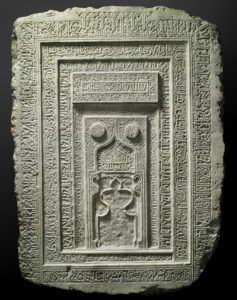
Ink, Silk, and Gold: Islamic Treasures from the Museum of Fine Arts, Boston, on display through September 3, 2017, features masterpieces of Islamic art spanning centuries, media, and Islamic tradition. The exhibition features more than 50 items and panels of text, giving the viewer an engrossing background on Islamic history. This is part of a series of blogs that will give you context to the items in the exhibition. Ink, Silk, and Gold is named for the materials that make up the exhibition. Each material is significant within the religion.
Early Islamic art is best encapsulated from the 8th to 10th centuries. That span of time was rife with great political shifts and the gradual creation of an artistic tradition unique to Islamic communities. When the Muslim state conquered the culturally sophisticated regions of land that belonged to the Byzantine and Sasanian empires in the 7th century, it absorbed the culture in those regions as well, helped shape and develop Islamic art.
The most distinctive art form of this period is the illuminated Qur’an manuscript. Though the Qur’an is essentially an artistic piece borne of oral communication, it assumed a material form during the lifetime of Muhammad. These transferred passages, or codices, make up the pages of the Qur’an and over time, the calligraphy on its sacred pages came to be used on everyday objects out of respect to the divine.
The Islamic world began to break off into separate kingdoms. Distinctive artistic traditions began to define Islamic art, even while common artistic elements persisted.


